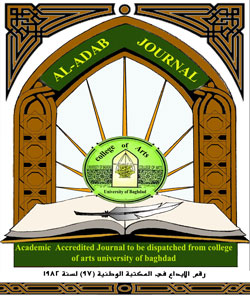Compound Formulas and Expressions From Sumerian and Akkadian In Modern Languages
( Especially Arabic)
DOI:
https://doi.org/10.31973/aj.v0i134.1016Keywords:
Sumerian, AkkadianAbstract
Usually, languages lend words to and from each other, in many cases, as well, words can be inherited from older to newer languages of interchanging groups of peoples, regardless ethnic affiliations. However, it is not so common to take or inherit composite forms or verbal forms to indicate specific meanings. This article analyzes a certain group of such forms, mostly from Sumerian, some from Akkadian which are still in use in the modern languages of the Near East, especially in Arabic. For example, the Sumerian forms nam-meš and (a)-zal which has become namūs (greek nomos) and ‘azal in Arabic, the Akkadian verbal forms šūlu, kânu, la išu and even the word ṣillu(m) are now in use in Arabic as šīl, kān, laisa and ṣallā in the praising phrase for the prophet.
Downloads
References
Edzard, D. O., The Sumerian Language, Leiden, 2003.
Frayne, D. R., Pre-Sargonic Period (2700-2350 BC), RIME 1, Toronto, 2008.
http://psd.museum.upenn.edu/epsd/nepsd-frame.html
Hübner, B. and A. Reizammer, Inim Kiengi, Sumerisch-Deutsch Glossar, vol. II, Marktredwitz, 1986.
Huehnergad, J., A Grammar of Akkadian, Atlanta- Georgia, 1997.
Livingstone, A., Court Poetry and Literary Miscellanea, SAA 3, Helsinki, 1989.
Rubio, G., “On the Alleged “Pre-Sumerian Substratum”,” JCS 51 (1999).
Speiser, E. A., “The Hurrian Participation in the Civilization of Mesopotamia, Syria and Palestine,” Oriental and Biblical Studies, Collected Writings of E. A. Speiser, ed. J. J. Finkelstein and M. Greenberg, Philadelphia, 1967.
Strong, J., A Concise Dictionary of the Hebrew Bible, New York, 1890.
Thayer, J. H., A Greek-English Lexicon of the New Testament, New York – Chicago, 1886.
The Chicago Assyrian Dictionary (CAD), Chicago.
Thomsen, M.-L., The Sumerian Language, Copenhagen, 1984.
Walker, C. B. F., Reading the Past: Cuneiform, London, 1987.
Westenholz, G., Sumerian Morphology, in: Morphologies of Asia and Africa, I-II, ed. Alan S. Kaye, Winona Lake, 2007.
Downloads
Published
Issue
Section
License
Copyright and Licensing:
For all articles published in Al-Adab journal, copyright is retained by the authors. Articles are licensed under an open access Creative Commons CC BY 4.0 license, meaning that anyone may download and read the paper for free. In addition, the article may be reused and quoted provided that the original published version is cited. These conditions allow for maximum use and exposure of the work.
Reproducing Published Material from other Publishers: It is absolutely essential that authors obtain permission to reproduce any published material (figures, schemes, tables or any extract of a text) which does not fall into the public domain, or for which they do not hold the copyright. Permission should be requested by the authors from the copyrightholder (usually the Publisher, please refer to the imprint of the individual publications to identify the copyrightholder).
Permission is required for: Your own works published by other Publishers and for which you did not retain copyright.
Substantial extracts from anyones' works or a series of works.
Use of Tables, Graphs, Charts, Schemes and Artworks if they are unaltered or slightly modified.
Photographs for which you do not hold copyright.
Permission is not required for: Reconstruction of your own table with data already published elsewhere. Please notice that in this case you must cite the source of the data in the form of either "Data from..." or "Adapted from...".
Reasonably short quotes are considered fair use and therefore do not require permission.
Graphs, Charts, Schemes and Artworks that are completely redrawn by the authors and significantly changed beyond recognition do not require permission.
Obtaining Permission
In order to avoid unnecessary delays in the publication process, you should start obtaining permissions as early as possible. If in any doubt about the copyright, apply for permission. Al-Adab Journal cannot publish material from other publications without permission.
The copyright holder may give you instructions on the form of acknowledgement to be followed; otherwise follow the style: "Reproduced with permission from [author], [book/journal title]; published by [publisher], [year].' at the end of the caption of the Table, Figure or Scheme.












